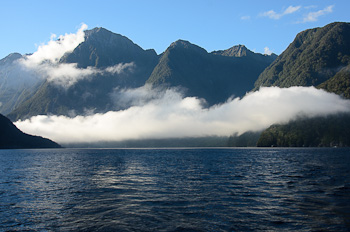
Tenaya
February
2012
Part One
Sailing in Fiordland:
Milford Sound
| |
| HOME |
| About Tenaya |
| About Us |
| Latest Update |
| Logs from Current Year |
| Logs from Previous Years |
| Katie's View |
| Route Map |
| Links |
| Contact Us |
![]()
February 6, 2012
Deepwater Basin: 44 40'.63S 167 55'.23D
Storms often barrel across the Tasman Sea whipping the southwestern corner of New Zealand with fierce winds and brutal waves. We wanted no part of that so waited for mellow weather to make the four day passage to Fiordland. Yes, it is spelled with an "i" in these parts.
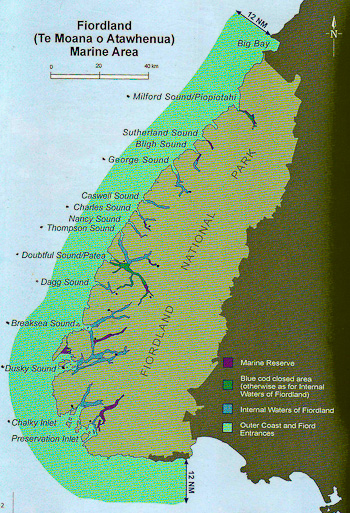
We left Nelson Marina at 1440 on February 1. As soon as we reached Farewell Spit the winds, which had been nearly non-existent, piped up to 25 knots from the east and the slight seas rose to moderate and then rough. Promptly at 1300 on Day Two the winds shifted to the NE and died down.
On went the engine for a few hours as the winds went round to the south, right where we were headed. We motored into 10-15 knot winds for a couple of days in slight seas. Again, a really calm passage for a notoriously scary section.
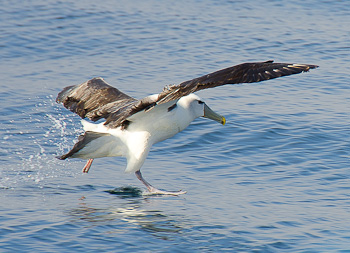
We would not reach Milford Sound in time to make it up to the anchorage in daylight so we slowed Tenaya and ghosted along with hardly a breath of wind on the glassy sea. Mollymawks, small members of the albatross family, glided effortless by. Sometimes they stopped to rest on the water.
A Cape Pigeon circled the boat before landing just behind the cockpit. It settled in and took a long nap but was chased away after backing up to the winch and main sheet and letting loose a big, stinky mess. Later he came back and landed on the dinghy to sleep some more.
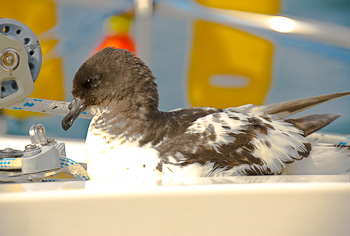
As I jilled about outside the mouth of the fiord waiting for dawn the bird returned. I saw the white of his belly as it caught in our steaming light. All of a sudden there was a flutter and he landed on the dodger not 12 inches from my nose. Soon he was asleep again. This is one tired bird! Once he awoke I chased him away while the dodger was still clean.
Jim came up at 0700 and we motored to the entrance of Milford Sound. A NZ fur seal accompanied us for a short while porpoising high out of the water.
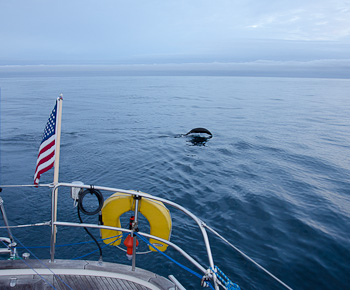
When Captain Cook passed by on his expeditions of New Zealand in 1770 and 1773, he missed seeing the entrance both times as they are obscured by land.
Claude William, a NZ yacht from the Mana Cruising Club, arrived and entered just after us. With only a handful of yachts in the area, we all know of each other. Meri from Bluff Fisherman's Radio runs a sked each night at 2030 on the SSB for all to check in on.
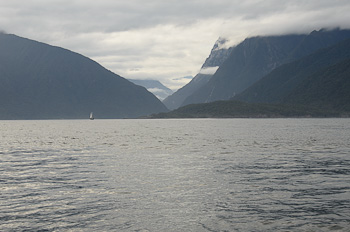
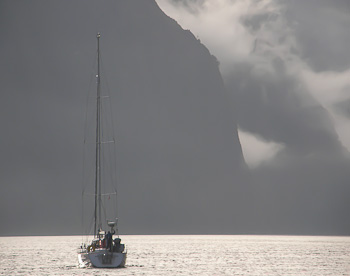
Low clouds hung off the shoulders of the majestic peaks and gathered in the folded valleys. The dramatic landscape was monochromatic shades of gray in the eerie dawn.
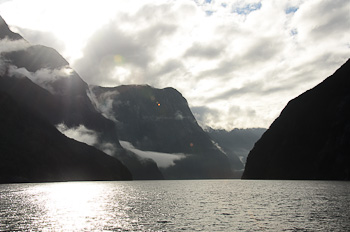
Of the fourteen sounds in Fiordland, Milford is the most famous. Each day thousands of people visit this spectacular place. They arrive by road from Te Anau 120k away, by plane or helicopter, or hike the famous Milford Track which culminates here. Very few, like us, arrive by yacht. The scenery is absolutely amazing but the raw physical nature, prevailing weather and vicious sandflies have kept humans from settling in this remote area.
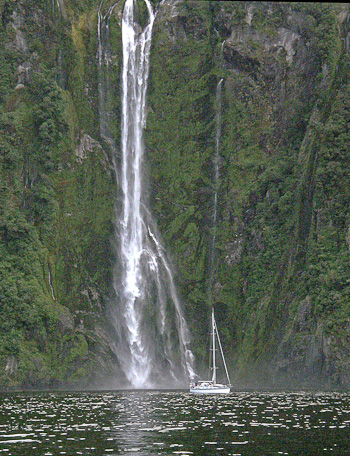
Waterfalls drop great distances from hanging valleys while vertical walls rise monumentally on either side of the narrow sound which isn't really a sound at all. How exciting it was to take Tenaya right up to Stirling Falls which cascades 146 meters from a spectacular U-shaped valley.
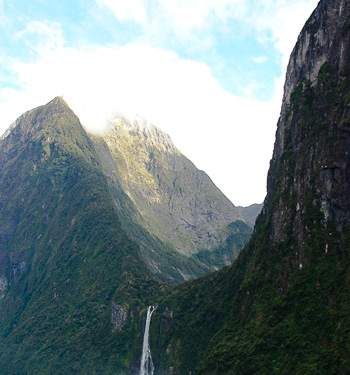
Beginning about 500 million years ago, thick layers of seabed sediment were compressed and heated deep within the earth's crust forming granite, gneiss and schist. As the land and sea levels rose and fell, softer layers of sandstone and limestone accumulated. During glaciation great ice sheets deepened the canyons and flattened their bases to create the the classic U-shaped valleys. When the sea rose again it flooded the floors and created a series of 14 fingers among the steep foothills of the Southern Alps. This is the grand, mostly untouched, awe-inspiring region called Fiordland.
Sills at proportionately shallow depths keep the vast amounts of fresh water accumulated by more than 7 meters of rainfall annually on the surface above the heavier saltwater. This water is stained the color of tea by tannins in the soil and blocks out much light causing some interesting effects on the sea and plant life below the surface.
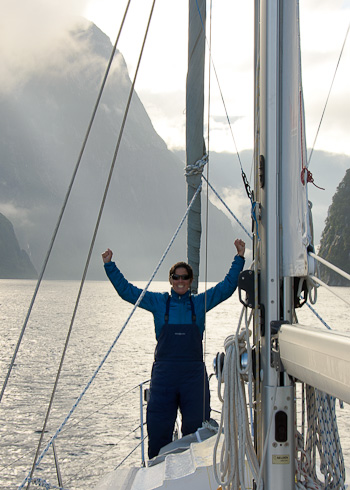
We were thrilled to have reached Milford Sound under our own power. As the sun rose higher in the sky and Tenaya moved slowly up the 16 km long fiord, the sky turned brilliant blue as puffy white clouds lingered about the lofty peaks.
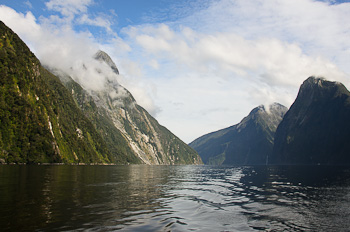
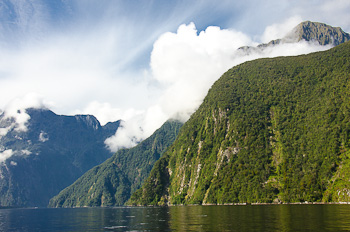
New Zealand fur seals floated by on their sides always fanning a flipper in the air and seemingly unconcerned by us or the tour boats that ply the waters. Two rare Fiordland crested penguins were fishing and paid no attention to the gawkers on the small yacht snapping photos of them.
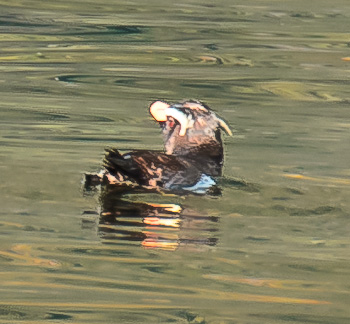
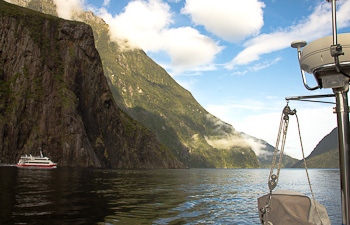
We felt tiny in the shadow of Mitre Peak which rises 1683 meters directly from the sea floor. If you've seen a picture of a peak in New Zealand, it is most likely Mitre Peak at the head of Milford Sound.
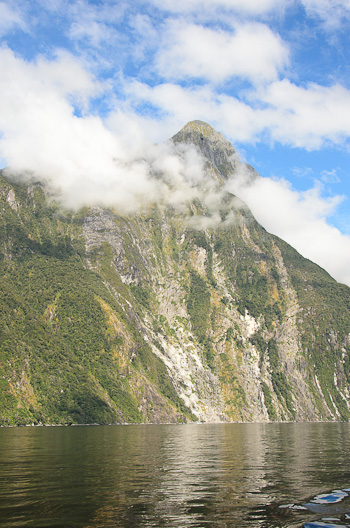
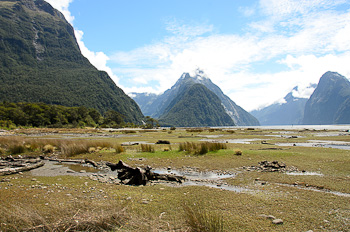
We threaded our way through the shallow water at the head of the fiord into Deepwater Basin and floated in the middle while waiting our turn at the fuel dock.
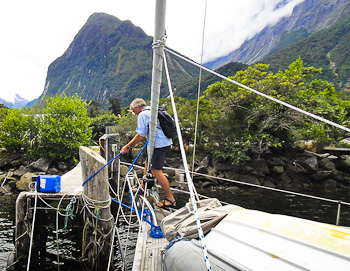
A few of the local fishing boats were away for the night so Fiordland Lobster Company allowed Claude William and Tenaya to tie in their "pens". The water was shallow and the tidal range is 2.2 meters so we tied Tenaya out as far as possible before walking into the small settlement for a fresh meal and a beer.
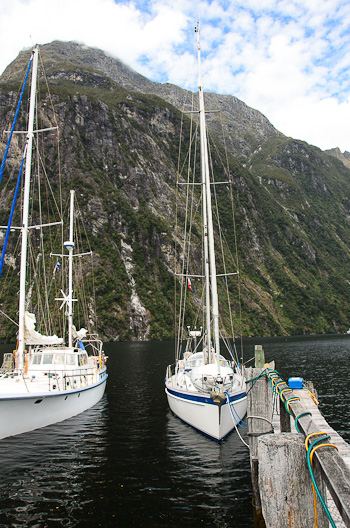
We returned to find we'd tied the sternline too tight and it was holding the bow too far out to reach. We were marooned! Fortunately the 82' Nordhavn, Gloria Maris, was in with their tender and gave us a ride, saving one of us from a swim. High water wasn't until the middle of the night.
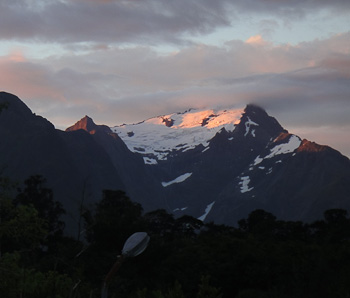
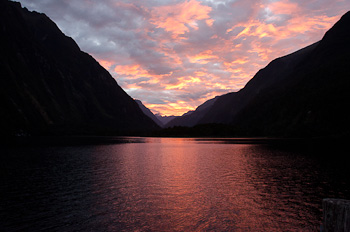
We normally like to have Tenaya's decks as clear as possible but she has slowly started to fill up. Fuel cans are necessary when there are limited facilities and we pulled out some more things we know we'll need traveling through the fiords.
Now our girl looks like one of those sloppy fixtures with stuff piled all over them you see in anchorages near cities that have not moved in years. In addition to the 4 yellow jugs of diesel always present, she's got a bag holding 100 meters of line lashed to stantions on both port and starboard, and the inflated kayak is secured to the dinghy on the bow. The paddles are assembled and tied to the coachroof along with a fender with 30 meters of old climbing rope to buoy our anchor. We look like a yard sale, but are ready to explore this amazing region.
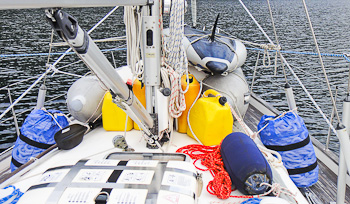
Go to February 2012 Part Two: George Sound
Go to Gerty Goes Round NZ: Milford Sound
Go to Route Map of New Zealand